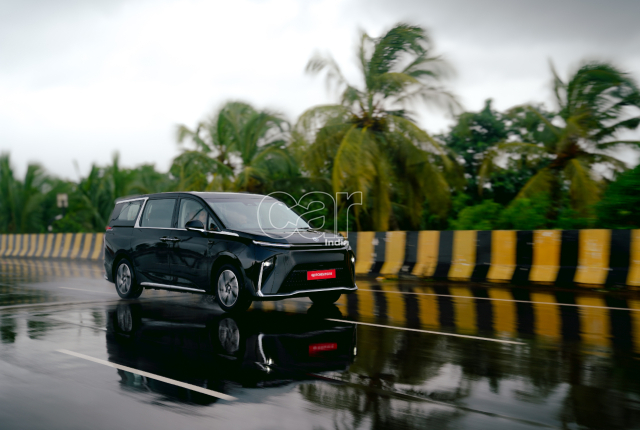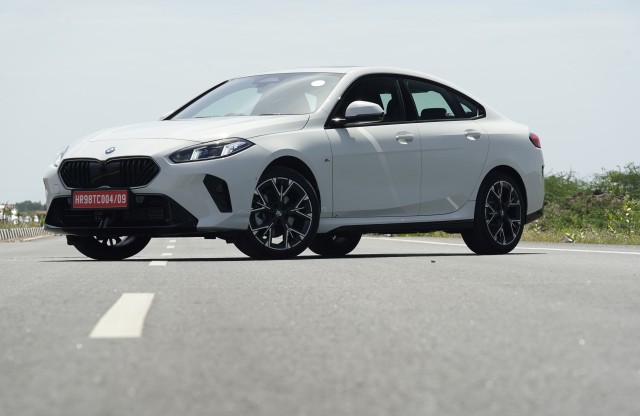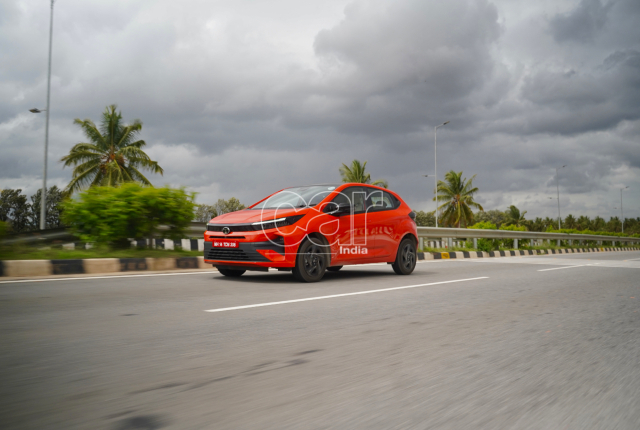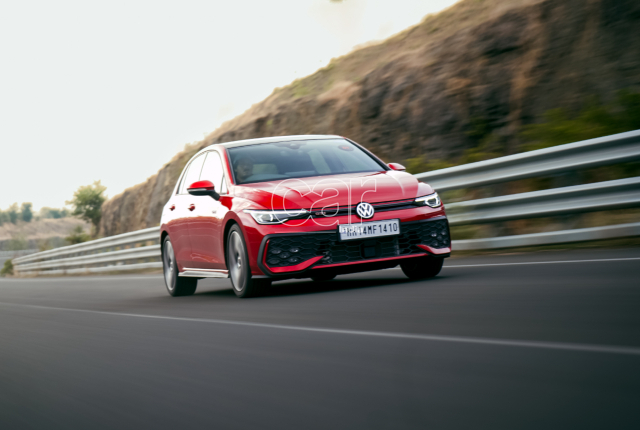 A snowbound Germany beckons Georg Kacher – and begs a slippery test of the new Audi Q5 and its rivals from Mercedes, Volvo and BMW.
A snowbound Germany beckons Georg Kacher – and begs a slippery test of the new Audi Q5 and its rivals from Mercedes, Volvo and BMW.
Photography Stuart Collins.
Â
 |
You DON’T NEED TO BE A TREE-HUGGING muesli eater with a fondness for hand-knitted pullovers to be an SUV hater. After all, just about everyone agrees that these dreaded two-plus-tonners will tear our ozone hole ever wider, guzzle our resources in record time and threaten our loved ones with a potentially lethal mix of mass and difficulty in controlling it.That’s why the automotive world is – at least in so-called civilised countries – giving American-style antiquated body-on-frame off-roaders the collective thumbs down. But in a closely related (and thus mildly schizophrenic) move, the global 4×4 fan club has simultaneously started to embrace the mushrooming crossover population. |
 |
The new crowd: the Audi Q5, Volvo XC60 and Mercedes GLK, is launched with the express task of attacking BMW’s X3. They’re all notably more eco-friendly than their full-size equivalents (Q7, XC90, ML and X5 respectively). Their emissions and consumption almost match the premium compact saloons they’re related to, and their handling is surprisingly unfazed by the higher centre of gravity and added flab. But in the Merc’s case, you might have a wait on your hands. It’s currently built only for left-hand drive markets. Mercedes will assess whether the UK’s customer base is worth serving with a right-hand drive version come facelift time, in late 2011. If you fancy one, clamour. You take four-wheel drive for granted in these pricey high-tech circles, but Mercedes is actually preparing a 4×2 version of the GLK, BMW will build a rear-wheel drive X1 (the X3’s forthcoming baby sibling) and Volvo is rumoured to be working on a Kuga-derived front-wheel drive version of the XC60. But all 16 wheels are driven on this foursome, which is a major bonus when you exit from a snowed-in car park, merge with traffic in iffy weather conditions, or you’re facing a steep hill glazed with black ice. And only four-wheel drive offers the confidence, control, convenience and go-anywhere capability these vehicles are all about. |
 |
We understand exactly why crossovers are popular in Bavaria, Tyrol and Switzerland. But what is the attraction when you live in London, Redondo Beach or Abu Dhabi, where lack of traction and grip are rarely an issue? In those places, the true appeal of these cars is the mix of easy entry and exit, the commanding driving position and that feeling of invulnerability. You sit above the herds, you are surrounded by a few extra square inches of sheet metal, and you see things better and earlier. They’re trendy too. And we’ll take that for granted as much as we do four-wheel traction. The current premium class leader in the mud-and-snow stakes is the recently facelifted BMW X3 (it will be replaced in 2010). The X3 has never been a bedroom poster favourite, and it looks distinctly old next to the fresh competition. The cluttered, hard-edged exterior is outmoded enough, but the real low is the cheapo plastic interior, which even lacks iDrive. It’s six years old and faces three brand new, emphatically modern opponents. |
The Audi Q5 is pretty, practical, sporty, innovative, powerful, very well made. The Mercedes GLK is more comfort-orientated, more relaxed, but modelled with a chisel rather than a scalpel. Between them, the floodlights zoom in on the Volvo XC60 – modern, tastefully appointed, Scandinavian in style and character, sufficiently dynamic despite its horsepower deficit. And while the Audi looks desirable in a low-key way, it’s the Volvo that wins on sex appeal. Hope you put enough Lattol on ice, chaps.
 |
If economy and ecology are your prime parameters, you’ll pick the more frugal entry-level models. But the 168bhp GLK220 Blue Efficiency isn’t on sale yet even in Europe, and the 161bhp Volvo XC60 2.4D is underpowered and over-thirsty. This would have left the 168bhp Q5 2.0TDI and the 175bhp X3 xDrive 20d, both of which are worth considering when commuting tops your personal priority list. But six cylinders are definitely more fun than four. The only five-cylinder in this quartet is the Volvo XC60 D5, which relies on a rather dated 2.4-litre unit rated at 182bhp and 399.5Nm. Theoretically, it doesn’t make the grade. In reality, however, the rough and raucous 20-valver rarely fails to keep up with the rest of the pack. But in the all-important mph vs mpg equation, the Swede is the weakest of the group. Although the standard manual six-speeder is well spaced and sufficiently light, it is handicapped by long throws and could be more precise. The optional six-speed automatic is definitely the better bet. |
 |
 |
 |
 |
Misleadingly badged GLK320, the Mercedes is equipped with a 3.0-litre V6. At 221bhp and 539Nm, it fits in the gap between the BMW (3.0-litre straight six, 215bhp/499.7Nm) and the Audi (3.0-litre V6, 237bhp/499.7Nm) but, as the German threesome approaches the finish line, the Benz drops back first. On test, it was the heaviest drinker (at 9.9kmpl, the GLK matched the Volvo but did less well than the 10.3kmpl Q5 and the 10.7kmpl X3), it feels marginally less energetic throughout the entire speed and rev range, and it carries the smallest fuel tank. The X3 takes off like Rover spying the postman, it revs like a turbine, and it teams up with the responsive six-speed slushmatic like a long-lost chum. But in such competitive company, that’s not quite enough to eclipse the Q5. The 224km/h Audi is fastest overall, closely followed by the Mercedes (220km/h), then the BMW (209km/h), with the 204km/h Volvo a distant fourth. Consolidating its advantage, the Q5 is also quickest off the mark by a surprising margin. It will sprint in a smoking 6.5sec from 0-100km/h, leaving behind the X3 (7.4sec), the GLK (7.5sec) and the XC60 (9.0sec).
 |
What does the trick is the super-clever seven-speed S-tronic transmission. The dual-clutch ’box executes full-throttle upshifts without the faintest loss of momentum by engaging one clutch as it disengages the other. Which means that the black box must be pretty good at predicting which ratio to pre-select next. When it does get the sequence wrong (it seldom happens), the time lost to fix the flaw is negligible. The only drawback concerns take-off, which is marginally less smooth and progressive than the torque converters of the opposition. But the Audi’s drivetrain is the best here, both against the stopwatch and the fuel gauge. The Audi is also quieter than its rivals, and – together with the Volvo – it emits the least CO2. |
 |
With every new model generation, the engineers seem to unearth a bit more grip, better traction, better brakes and an extra dose of power and torque, while finding more cabin space, extra versatility, improved ergonomics and new driver assistance systems. But what the R&D departments stubbornly ignore is progress in terms of ride quality. And it’s a trend that’s going from bad to worse. The evidence? Our S-line Q5, the base X3 test car and the GLK, which arrived with sports suspension and 19in tyres. In their ambition to out-handle and out-corner each other, the engineers are resorting to spring and damper calibrations that are aggressive enough to rearrange your discs. Even when it’s fitted with the optional Drive Select programme and set in ‘comfort’ mode, you could drive the Q5 over a euro coin and tell which country it was minted in. |
 |
The Merc tramlines and the BMW jitters like a shrimp on a barbecue. The only car with a compliant chassis is the Volvo. Except over sharp irregularities, its ride is cushy and its dampers strike the right balance between composure and elasticity. Yes, there’s a bit more pitch, roll and dive, but such mild body motions are normal for a vehicle that was not delivered with rally stripes and roundels. Although the Volvo understeers with more determination than its rivals, it feels inherently safe and extremely stable. After we swapped its 19s for more appropriate 18in Winter tyres, the Mercedes calmed down and deserves praise for its now quite well-judged ride and handling qualities. The GLK doesn’t exactly beg to be pushed but, when you crack the whip, it actually enjoys life at the limit of adhesion, though the meaty steering is a tad heavy, the brakes need a stab to deliver, and the V6 wants to be revved before it will show off. The Q5 feels equally comfortable in manual or auto mode. Shifting gears with the fingertips is fun for a while, but we’d rather leave the lever in D and Drive Select in ‘normal’. Why? Because the default settings are best for smooth gearshifts, a sufficiently taut chassis and a brisk throttle response. The Audi also sports the best brakes, not only in terms of absolute stopping power but also as far as effort and modulation are concerned. The X3 has the most willing drivetrain, the most intuitive steering and the most dynamic chassis. That would be fine if it was a sports car but, for a premium crossover, the rough-riding BMW is simply too crude and too compromised. And while it boasts a big boot and a spacious interior, the seats are hard and not particularly supportive,the rear bench is quite narrow, and the dashboard looks more ’90s than 21st century. |
 |
Sadly, the GLK interior is not much more appealing. It suffers from a mix of angular shapes and surfaces clad with ho-hum materials. Despite the latest-generation Comand media interface, the cockpit feels strangely old-fashioned – with the notable exception of the easily reached window lifts and power seat adjusters. The Audi is extremely well made but the ambience is sombre, the number of switches grouped around the MMI knob is positively inflationary, and access to the centre stack could be better. The Volvo is handicapped by an impossible sat-nav system which is hard to read and harder to operate. But the cabin layout, the seats and the rest of the instrument panel are first rate, though the best bits come in pricey equipment packs, and mod cons such as active cruise control, lane departure warning and the driver alert monitor are linked to a nerve-wracking army of warning lights and chimes. Time to round up the four candidates for the winner’s circle. The BMW is forced to park at the back of the crossover corral – it’s a vehicle with clear strengths but too many weaknesses. The number three spot is reserved for the Volvo. Shame, because with a stronger engine, the XC60 might have been the winner. As it is, it wins only on appearance and ride comfort, and the GLK beats it overall by a short head. The Merc’s design polarises (which is almost never a good thing), and dynamically it tends to be bettered by the BMW, the Audi or both. So the trophy goes to the Q5, but we have seen grander victories and more compelling winners. While its engine, transmission, handling and build quality are hard to fault, the extra-dry ride, the austere cabin and the long list of mandatory options leave room for improvement. |
Which brings us back to that earlier question: why buy a crossover? Unless you habitually muck about in abandoned quarries, why not buy an estate car instead and save a bundle? Before you attempt to clamber the social acceptance ladder in what might turn out to be the wrong outfit, make sure you check out the Audi A4 3.0 TDI Avant Quattro first.





















Leave a Reply